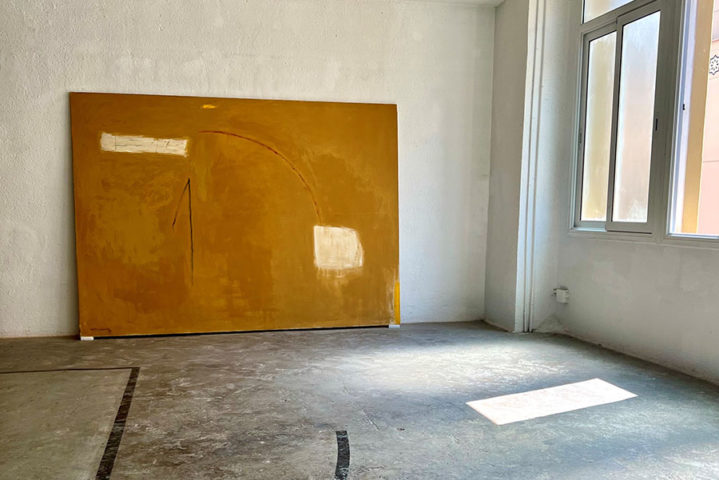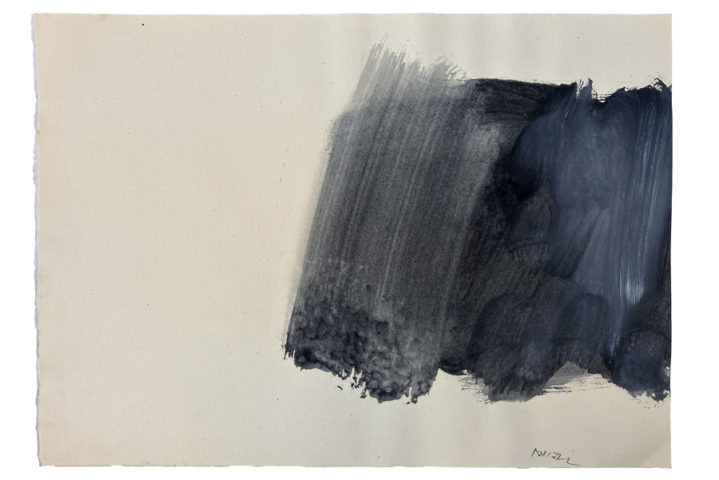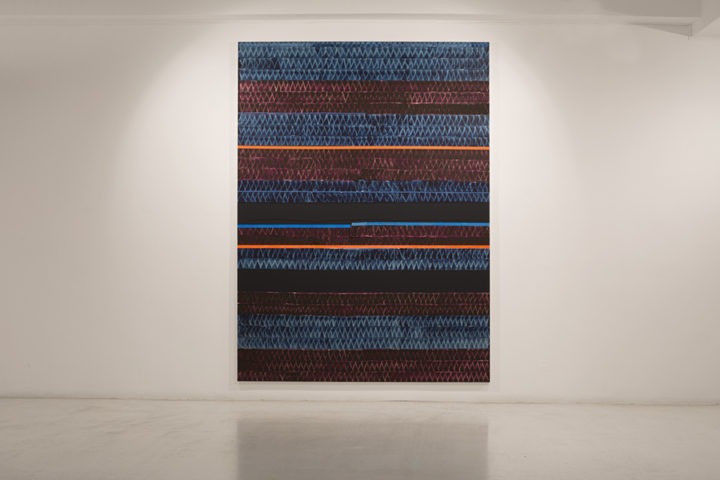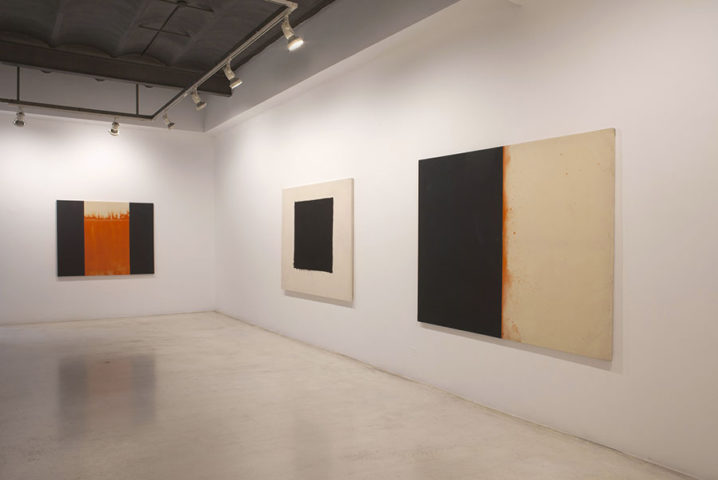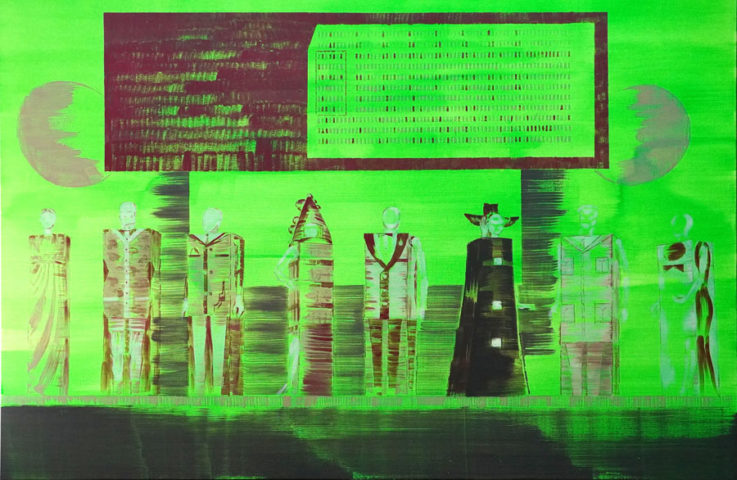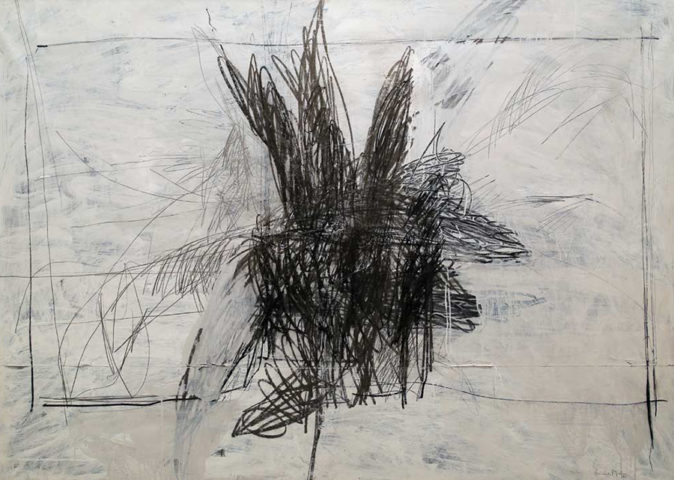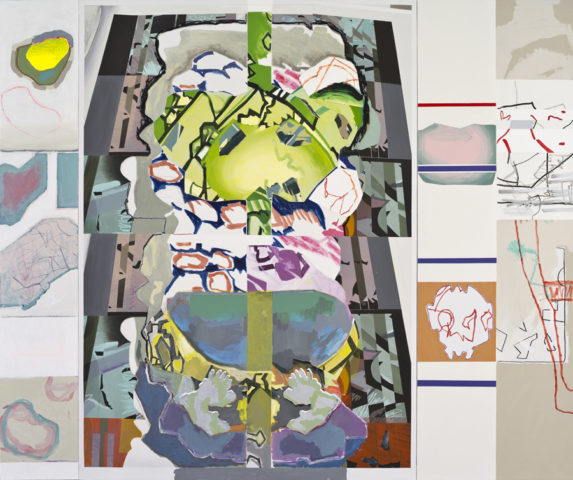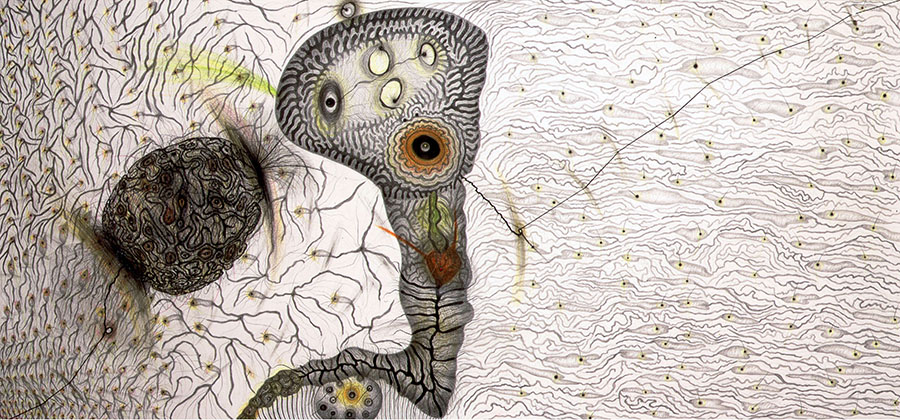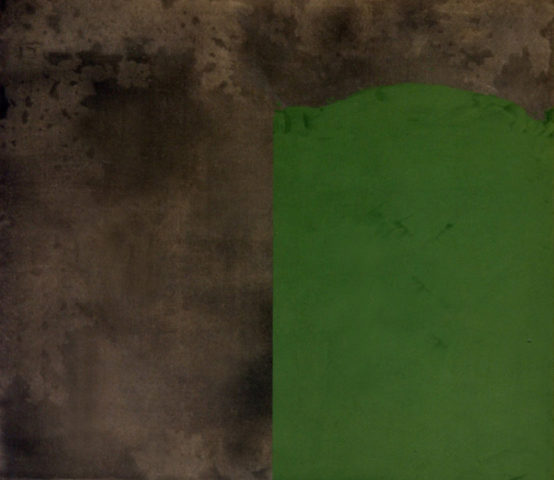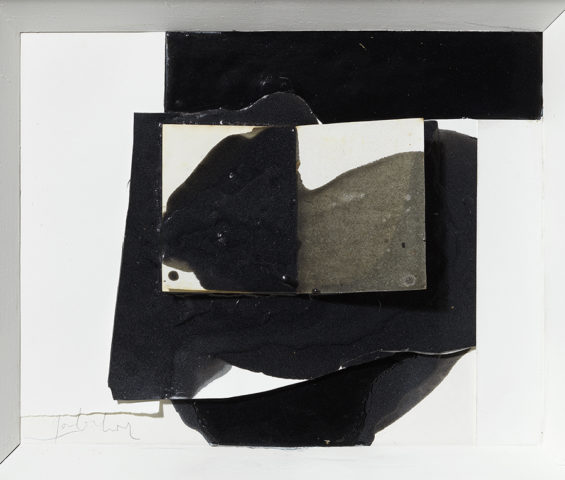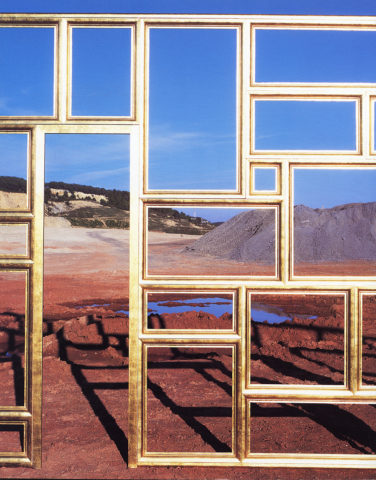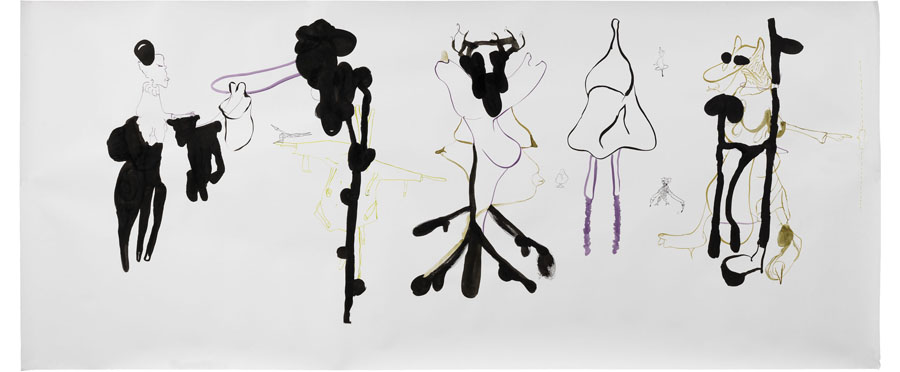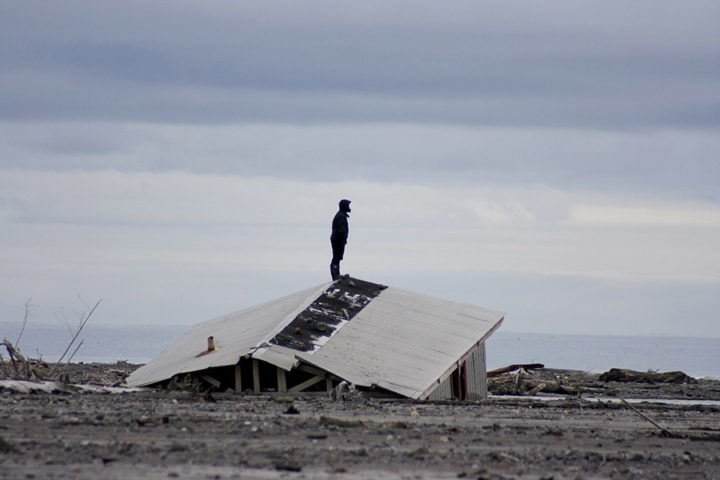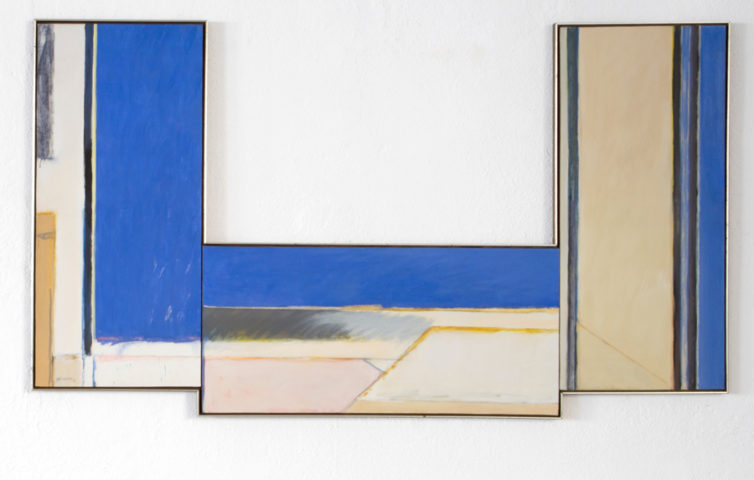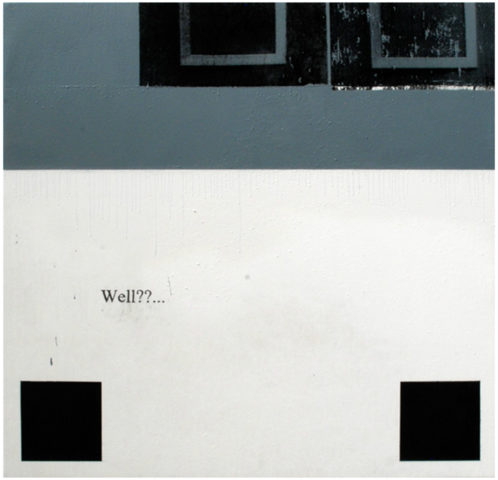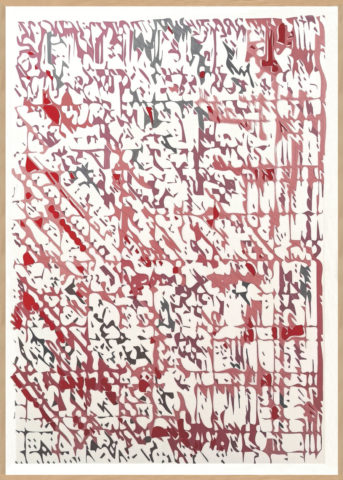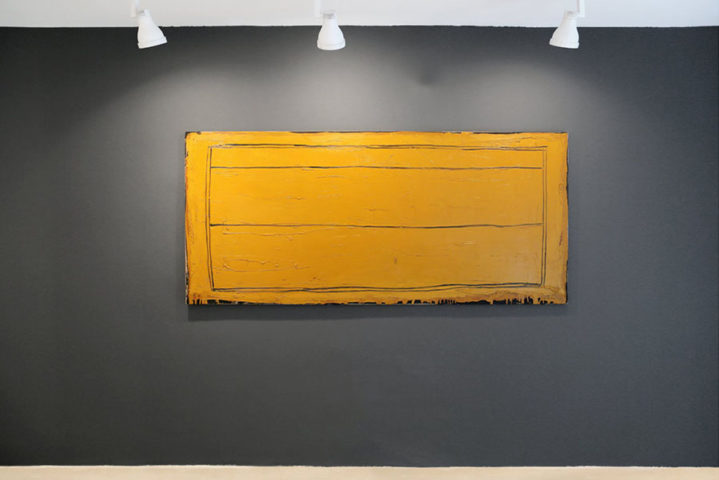With Mar Arza, Anna Irina Russell and Pere Llobera. Curated by Rosa Pera
We are pleased to present a new exhibition, De la rialla Del crit. Elegia del retorn* by Ràfols Casamada at the Galeria Joan Prats, curated by Rosa Pera, in the year in which is celebrated the centenary of the artist’s birth. The exhibition will also feature the participation of the artists Mar Arza, Anna Irina Russell and Pere Llobera.
In this exhibition will be shown a selection of works by Ràfols Casamada (1923-2009), an emblematic artist of our gallery, who had a long career in painting and poetry, and also in artistic education. Rosa Pera presents a profuse exhibition proposing a current reading of Ràfols Casamada’s work. Her approach to the artist’s creations attempts to escape the standards that we had become used to perceiving his work.
*The title is a fragment from a poem by Ráfols Casamada, which is hard to translate but would be literally Of the laugh Of the cry
Elegy of the return
Albert Ràfols Casamada (Barcelona, 1923-2009). Among his latest retrospective exhibitions, the following stands out: Ràfols Casamada i Maria Girona. L’equilibri possible, at the Museu de Montserrat, Montserrat; Albert Ràfols Casamada Écho. Peintures et Dessins, at the Centre d’Arts Plastiques, Espace d’art contemporain des Voûtes du Port, Royan (2018); Albert Ràfols Casamada. Pintura, at the Fundació Vila Casas, Barcelona; El camino del color, Ràfols Casamada y Esteban Vicente, at the Museo Esteban Vicente, Segovia; Signe d’air. Albert Ràfols-Casamada et Paris, at the Cervantes Institute, Paris (2016); Ràfols Casamada. Pintura 1950-2005, itinerant between 2003 and 2009 in centers in Prague, Bratislava, Tirana, Lisbon, Rome, Guadalajara, Mexico and New York; Ràfols Casamada: Espacios de luz, at the Fundación Real Casa de la Moneda, Madrid (2007); Albert Ràfols Casamada, in the Abadia de Santo Domingo de Silos, Burgos; Els espais de color. Pintura 1980-2003, at the Centre Tecla Sala, L’Hospitalet de Llobregat (2003); Ràfols Casamada, at the MACBA, Barcelona and at the IVAM, Valencia (2001).
He received the Creu de Sant Jordi from the Generalitat de Catalunya (1982), the Premi Nacional de Arts Plàstiques (1980), the appointment of Officier de l’Ordre des Arts et Lettres (1991) and the National Prize of Visual Arts (2003). His work is present in numerous collections such as MACBA in Barcelona, MNAC in Barcelona, MNCARS in Madrid, Museo de Bellas Artes in Bilbao, IVAM in Valencia, Museo de Arte Abstracto in Cuenca, Musée d’Art Moderne in Paris, Museo Rufino Tamayo in Mexico, Joan Miró Foundation in Barcelona, Juan March Foundation in Madrid, National Heritage of Madrid and Georges Pompidou Center, Paris.
In 2023, the anthological exhibition Ràfols Casamada: obres de la Col·lecció Bassat was presented at the Nau Gaudí in Mataró, and the exhibition Ensenyar és aprendre (Teaching is learning), with art works and archival material, was presented in Eina, Barcelona. In November will also open the exhibition Ràfols Casamada. El passeig del poeta, at the Fundació Palau de Caldes d’Estrac, within the celebrations of the centenary of the artist.
Rosa Pera (Barcelona, 1966) is a curator, researcher and art critic, specialized in contemporary art, who has explored its connections with design, architecture, collective learning and public space, through exhibitions and diverse projects. As such, she has experimented in specific formats inside and outside the museum, such as Insideout: jardí del cambalache, Fundació Tàpies (2001), On Translation: la imatge, MACBA (2003), Ambulantes. Cultura Portátil, CCAC (2003), Quórum, La Capella (2004), On Translation: Die Stadt, CaixaForum (2005), Fuera de Lugar, Museu del Disseny (2015), or the Global Youth Culture Forum in Jeju, South Korea (2018-2019). She has dived into the work of figures such as Muntadas, Bill Viola, Ai Weiwei, Miralda or Buckminster Fuller, through exhibitions and projects in different museums and contexts. She was the founding director of Bòlit. Centre d’Art Contemporani. Girona (2008-2012), where she curated more than 20 exhibitions and projects in different spaces from the city and she was a member of the I Executive Committee of Culture of the ICUB-Institut de Cultura de Barcelona (2008-2012).
Mar Arza (Castelló, 1976) uses poetry as the main language in her work. She studied Fine Arts in Valencia and later in Pittsburg (Pensilvania, US) and Winchester (UK). In her creations, words and text predominates, as well as textures and paper.
Anna Irina Russell (Barcelona, 1993) through installations, sculptures and actions, investigates forms and structures of communication. The game is a fundamental part of her artistic practice, and she often invites the public to relate to her work. She has shown her creations in centers such as MACBA, CCCB, Blueproject Foundation, La Casa Encendida and Bombon Projects.
Pere Llobera (Barcelona, 1970) carries out his artistic practice through the mixture of different disciplines: painting, sculpture, installation. His work has a poetic tone and is mainly inspired by popular culture and music. In addition to his career as an artist, he has also been the curator of several exhibitions. He was an artist residence at the Rijksakademie, Amsterdam, between 2006 and 2007.
